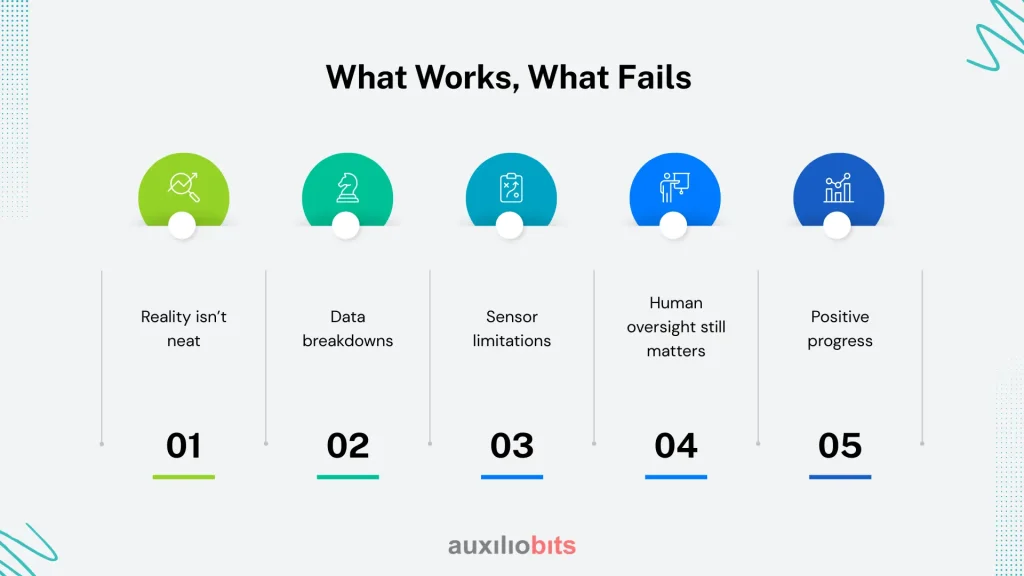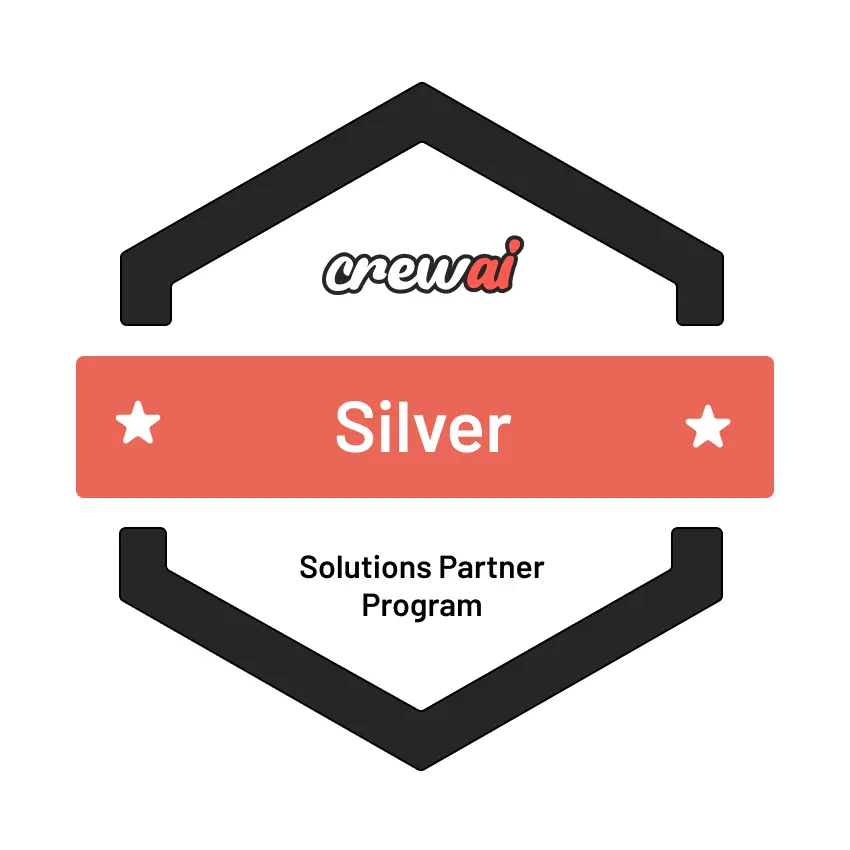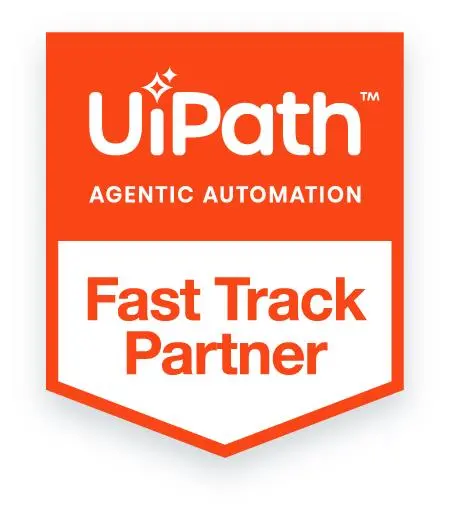Key Takeaways
- Agentic freight tracking turns static GPS dots into decision-making entities. By merging GPS, edge computing, and cloud analytics, shipments can assess their own status, detect risks, and communicate actionable insights in real time.
- NVIDIA-powered edge devices enable local intelligence when connectivity fails. Jetson modules can analyze temperature, vibration, or route data onboard, triggering alerts even in dead zones—bridging the gap between the road and the cloud.
- Cloud analytics adds strategic context that edge alone cannot. Platforms like AWS IoT and Azure Digital Twins correlate millions of localized agent events into fleet-wide insights, bottleneck detection, and predictive maintenance.
- Security and human adaptability remain critical. As data streams intensify, keeping edge firmware updated, segmenting networks, and training field teams to manage alert fatigue are key to sustainable operations.
- Agentic tracking is not about automation for its own sake—but adaptive intelligence. True value lies in context-aware coordination between sensors, algorithms, and human expertise—turning logistics from reactive oversight into proactive orchestration.
Anyone who has followed logistics knows that “track and trace” used to mean a dispatcher staring at a map and interpreting cryptic location messages. Today, even a regular customer can follow a package online in real time. But industrial freight—multi-modal, high-value shipments—still faces gaps and delays in information. Agentic freight tracking changes that. By combining GPS, Nvidia edge computing, and cloud analytics, it turns supply chains from reactive systems into proactive ones, where machines understand the situation and humans step in only when necessary.
Also read: Smart freight matching: agent orchestration between logistics partners and carriers
The Problem: Static Data Meets Rolling Reality
Anyone who has tried to track a cross-border shipment knows how frustrating it can be. GPS may show a single dot on a map, but that dot often updates only once an hour, leaving long gaps in visibility. The “estimated arrival” times displayed by the system can be wildly inaccurate—sometimes as unreliable as a weather forecast for next month. Meanwhile, critical questions remain unanswered: Is the refrigerated trailer still maintaining the correct temperature? Has the container suffered a jolt or vibration that could damage sensitive equipment inside? Traditional, static tracking data simply doesn’t provide these insights.
Agentic freight tracking changes this. By combining GPS telemetry, edge computing, and cloud analytics, shipments can monitor themselves in real time. Sensors detect anomalies, assess risk, and alert teams only when action is needed. This approach doesn’t remove all uncertainty, but it gives logistics teams far more control and visibility than traditional tracking ever could.
Why Edge Compute Matters
High-resolution GPS and sensor arrays sound impressive, but the data volume can be overwhelming. In rural areas, like parts of Oregon, cellular dead zones aren’t just inconvenient—they create real operational gaps. If a truck loses contact for hours and the reefer fails, central dashboards can only report the problem after the fact.
Edge devices with NVIDIA GPUs help solve this. They keep some decision-making local. Jetson units can run models onboard to spot issues before sending data upstream. For example:
- Track temperature changes and trigger pre-set alerts.
- Detect unexpected route deviations and check against geofences.
- Monitor tire pressure and flag potential maintenance needs.
Edge devices aren’t perfect. Complex multi-modal shipments, like truck-to-rail-to-ship transfers, may have handoffs where the edge computer can’t see everything. Many docks lack reliable infrastructure, and some ports have strong security but weak connectivity. Cloud analytics remain essential to fill in these gaps for full agentic freight tracking.
The New Role of Cloud Analytics
Cloud platforms like AWS IoT Core, Azure Digital Twins, and Google Logistics Toolkit help logistics teams make sense of data that was previously scattered or incomplete. Collecting data alone isn’t enough—what matters is interpreting it in context to support real decisions.
Cloud analytics can:
- Connect edge-generated “agent” events to broader operational patterns, helping teams see how individual shipments affect overall performance.
- Identify systemic delays, such as bottlenecks at border crossings or congestion along key routes, using historical trends and overlays.
- Assess risk by combining public datasets, like weather forecasts or regulatory notices, with private sensor readings from trucks, containers, or warehouses.
- Deliver fleet-wide diagnostics, allowing predictive insights that wouldn’t be possible by looking at shipments individually.
A note of caution: any provider claiming “total situational awareness” is overselling. Cloud analytics are powerful for spotting patterns and forecasting likely outcomes, but they remain probabilistic. The real advantage comes from combining detailed, per-shipment edge insights with strategic, high-level analysis to make decisions faster and more accurately.
Real-World Case Example: Cross-Border Medical Supply Chain
Consider a pharmaceutical shipper sending vaccine doses from Mannheim, Germany, to Lagos. GPS alone tracks the convoy’s geolocation, but the journey switches modes—truck, plane, long-haul truck—and crosses into regulatory wilderness.
The challenge isn’t just “where is it?” It’s “has the cold chain been verified at each leg?” An NVidia-powered sensing box rides alongside:
- Captures humidity, temperature, and acceleration data, annotated with GPS.
- Detects cargo door open/close events—correlates to known customs inspection waypoints.
- Triggers cloud-based machine learning upon arrival for an after-action report. If anomalies are found, those insights get routed to future forecasts and insurance claims.
For example, some time back, an importer noticed patterns—certain corridors had persistent over-temperature events during truck handoffs, never caught by manual checks. The system not only changed shipping protocol but flagged driver behavior (extended idling with engine off near Sokoto).
What Works, What Fails
Agentic platforms aim to intervene proactively, but reality is messier:

- Reality isn’t neat: Agentic platforms aim to intervene proactively, but logistics environments remain unpredictable.
- Data breakdowns: Connectivity gaps—like rural cellular dead zones or legacy truck connectors—can disrupt sensor data flow.
- Sensor limitations: A $400 sensor might save $40,000 in spoiled vaccines, yet still miss a slow leak if unnoticed or uncalibrated.
- Human oversight still matters: Automated alerts perform well until real-world variables—like an RFID tag resetting or customs data entry errors—throw systems off.
- Positive progress: Fleets increasingly self-detect anomalies without manual supervision.
But edge computing can overreact. False positives are common—like a sharp turn on a mountain road triggering a crash alert. The learning curve for operators is steep, but manageable. Tuning the system takes time and operational experience.
More Than Freight: Agentic Tracking Extends Further
Agentic tracking isn’t limited to standard pallets or ISO containers. A wide variety of shipments—bulk chemicals, livestock, fine art, and other specialized cargo—can all benefit from smart, context-aware monitoring. Each type of shipment comes with unique risks and requirements, and agentic systems can help manage them in ways traditional tracking never could.
- For livestock transport, sensors can monitor temperature, humidity, and animal stress levels, flagging any abnormal stops or conditions that might harm the animals. This allows haulers to intervene quickly and prevent loss or suffering.
- For oversized or heavy loads, monitoring structural stress, torque, and route adherence ensures compliance with legal limits and helps avoid accidents. Alerts can highlight deviations before they become serious issues, protecting both cargo and infrastructure.
- For perishable goods, real-time analysis of temperature, humidity, and vibration can forecast shelf life more accurately than static data, reducing spoilage and waste.
It’s tempting to assume that one system can handle all types of cargo. In reality, each vertical has its own demands—pharmaceuticals require extreme precision, mining shipments need resilience under harsh conditions, and food and beverage cargo must meet strict compliance standards. Successful agentic tracking relies on adaptability, tailoring monitoring, alerts, and analysis to the specific needs of each shipment rather than trying to apply a one-size-fits-all solution.
Integrating Data Silos: The Unseen Challenge
Any advanced freight tracking platform must wrangle legacy systems. ERP integrations, customs portals, fleet management apps—these often operate in silos. Even today, Excel sheets circulate among field offices.
Cloud analytics promise to stitch these systems together, but the “last mile” of data integration is never elegant. Waiting for perfect harmonization means running out of time. Incremental wins—linking edge events to ERP status updates or pulling sensor flags into inventory control—matter more.
- Map agent alerts to order fulfillment stages.
- Cross-reference anomalous sensor events with supplier quality logs.
Challenge here: companies often overestimate the value of perfect data. A sensor running amok isn’t a crisis, but failing to act on obvious outliers is
Security and Privacy: The Upfront Trade-Offs
When agentic platforms start analyzing telematics data, privacy and security quickly become major concerns. Different regions have their own rules—like the EU’s GDPR, India’s DPDP, and California’s CCPA—and even cloud providers vary in how they handle where data is stored.
Some experts warn that the drive for detailed operational insights can make companies overlook new security risks. Edge devices are especially vulnerable—they can be physically accessed, hacked through outdated firmware, or used to leak data from connected “smart” modules.
A few simple but often ignored precautions can help: keep edge firmware up to date, and keep logistics networks separate from office IT systems. Also, avoid putting all analytics in one centralized system, since that can become an easy target. Distributing analytics across agent-based systems reduces overall risk and improves resilience.
The Human Factor: Trust, Training, and Adaptation
Tech teams love their dashboards, but people in the field—drivers, customs agents, warehouse leads—often have to deal with nonstop alerts and notifications. Teams should be trained to recognize “alert fatigue.” Not every message from an agentic system needs an immediate response.
Policies should always prioritize human judgment. Algorithms can recommend actions, but real-world experience often provides better context. For example, seasoned drivers might trust their instincts when a vibration sensor triggers an alert—sometimes they’re right, sometimes not. But a trusted operator can tell when a system is acting strangely, choosing to ignore false alarms or escalate real issues. Regular training, continuous feedback, and open two-way communication work far better than rigid, one-time standard operating procedures.
Agentic Freight in Practice: Navigating With Context
Agentic tracking isn’t a cure-all—it’s a stabilizing tool for logistics teams dealing with constant uncertainty. Context makes all the difference. In cities, edge systems can overreact—every traffic jam might look like a route problem.
On long rail routes, especially across countries, agentic tracking shines by spotting mechanical or environmental risks early.
Real success comes from balance: sensors, algorithms, and people working together—sometimes smoothly, sometimes with friction.
Opinionated Predictions
- Broad adoption of agentic principles is inevitable—but uneven. High-value shipments will see an early, comprehensive rollout; commodity bulk, less so.
- Sensor fusion is as much about politics as engineering: supplier incentives, regional trade rules, and even insurance premiums drive standards, not just technical merit.
- NVIDIA and its peers (Google Coral, Intel Movidius) aren’t just compute solutions—they’re the scaffolding for an era when every bored dispatcher has a real-time, context-rich “asset control room.
The contradiction? Hyper-local autonomy sometimes complicates top-down oversight. Logistic managers, used to “call-in” reporting, may find agentic systems annoyingly insistent. The answer isn’t more alerts. It’s smarter alerts—intelligent sensors that learn, edge agents that self-tune, and analytics that contextualize, rather than flood, the operator.
Traditional freight tracking will never vanish. But agentic models, blending robust edge hardware with cloud intelligence, represent the field’s evolving language. There’s no grand finale, just ongoing adaptation. As always, the best operators are those who see technology not as destiny, but as a toolkit—imperfect, powerful, and, like logistics itself, never entirely under control.








